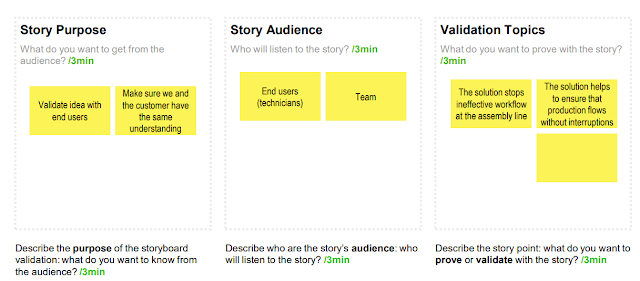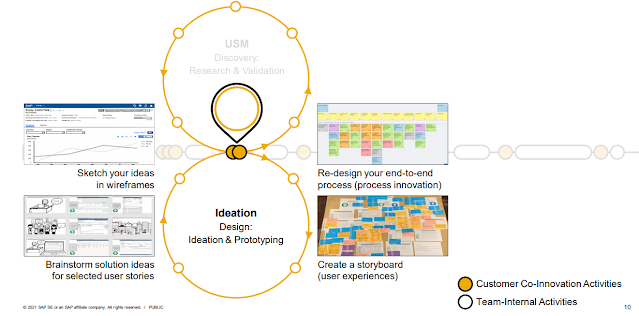openSAP: Build Better Products with a Human-Centered Product Backlog
- Good Product Backlog Definition
- Aspects of a product backlog
- Product Backlog Structure and User Story Mapping
- Story-driven communication
- Document-driven communication
- Preconditions for User Story Mapping (USM)
- Product vision statement
- Creating As-Is and To-Be Processes
- Creating the Walking Skeleton
- User story mapping
- Writing, Refining, and Splitting Your User Stories
- INVEST criteria
- Deriving Non-Functional Requirements from Your User Stories
- Product Backlog Validation and Refinement
- A Deep Dive into the Persona Technique
- Validating Your Backlog with Storyboards
- Building Your Storyboard with SAP Scenes on MURAL
- Collaborating with Your Customers During Discovery
- Project pre-sprint activities
- Refining Your User Stories with Customers
- Product Backlog Ranking
- Estimating Complexity for Your User Stories
- Identifying the Business Value
- Categorizing User Benefits with the Kano Methodology
- Ranking Your Product Backlog
- Planning the Delivery of Product Increments
Good Product Backlog Definition
Aspects of a product backlog
- A clear collaboration process is in place.
- Roles and responsibilities are clearly defined.
- The customer is involved in all phases.
- The product backlog is created in a mixed team (PO=V,
- architect = F, UXD = D).
- The product backlog is refined in a mixed team (V,F,D).
------------
- A minimum viable product (MVP) is defined together with the customer.
- The timeline is aligned and frequently revised with the customer (timeline until delivery).
- Risks are well managed (ROAM) = Once a risk has been identified, the team takes care of it in a structured and agile way.
------------
- An overall business objective (e.g. product goal) is defined (viability).
- The overall technical solution (e.g. architecture vison) is defined (feasibility).
- The overall idea how the users benefit from the future solution is defined (desirability).
------------
- Effort estimation: The effort for user stories is estimated in story points = effort estimation.
- Business value: The business value for each user story is estimated and documented by business experts from the customer.
- Desirability: The importance from a user’s perspective of each user story is estimated and documented based on end-user feedback (Kano).
------------
- The product backlog is appropriately detailed.
- The product backlog is estimated.
- The product backlog is emergent.
- All product backlog items are prioritized from top to bottom.
Product Backlog Structure and User Story Mapping
Document-driven communication
Story-driven communication
Product vision statement
For <target customer>, who <statement of the need or opportunity>,
the <product name> is <product category>, that <major capabilities,
key benefits, compelling reason to buy or use>.
Unlike <primary competitive alternative, current system or business
process>, our product <statement of primary differentiation and
advantages of the new product>.
Creating As-Is and To-Be Processes
Creating the Walking Skeleton
A “walking skeleton” is the simplest implementation of a functional area of software. “Walking” means that the minimal implementation works and the user is able to reach his/her goal.
“Skeleton” means that the essential parts exist, but most of the functionality – the meat – is still missing.
The goal is to receive early feedback from users and stakeholders.
INVEST criteria
We never have enough information to estimate the time needed to implement a user story, but you can immediately begin to compare the sizes of user stories to each other to determine a relative size.
Deriving Non-Functional Requirements from Your User Stories
Acceptance criteria are a clear and concise description of the expected behavior for a specific backlog item/user story.
Definition of Done (DoD) helps to achieve a common understanding on what is expected from
the team so that the backlog item can be considered finished.
Unlike acceptance criteria, these expectations need to be considered for all backlog items.
- Validation of Requirements / User Stories
- Validation of Solution Ideas / UI prototype
A Deep Dive into the Persona Technique
Validating Your Backlog with Storyboards
What might happen ….
Visualizing problems Communicating ideas Developing quick concepts Streamlining user journeys / processes
Building Your Storyboard with SAP Scenes on MURAL
Project pre-sprint activities
Refining Your User Stories with Customers
Product Backlog Ranking
A great product isn’t just a collection of
features. It’s how it all works together.
Estimating complexity, not time
Identifying the Business Value
Build a shared understanding regarding business value
Build a shared understanding regarding user benefits






































Comments
Post a Comment